In a number of useful and accessible vegetable crops, cabbage occupies one of the leading positions. It’s hard to imagine a table without this vegetable, a real well of vitamins: salads, pickles, appetizers, first and second dishes of fresh and sauerkraut. The simplicity and ease of preparation, the possibility of long-term storage, irreplaceable wholesome and excellent taste and very low calorie content make it a favorite of adults and children.
A huge number of varieties allows a wide choice of hostesses, but many prefer the variety of Sugar Loaf, the description and characteristics of which are presented below.
Table of contents
Description and Characteristics of the variety
This variety of cabbage is deservedly popular among summer residents and gardeners. It belongs to the family of Cruciferous, late-ripening white-toed varieties. The Sugar Loaf variety was selected by specialists from the Moscow company Zedek in 2008. Suitable for both large commodity production and cultivation in home gardens.
A mature plant has a wide spreading rosette, reaching a diameter of 80 cm, height - up to 40 cm. The period of vegetation and ripening from germination to full technical ripeness - an average of 130-160 days. Ripe cabbage weight from 2 before 4 kg (maximum - up to 6.5 kg).
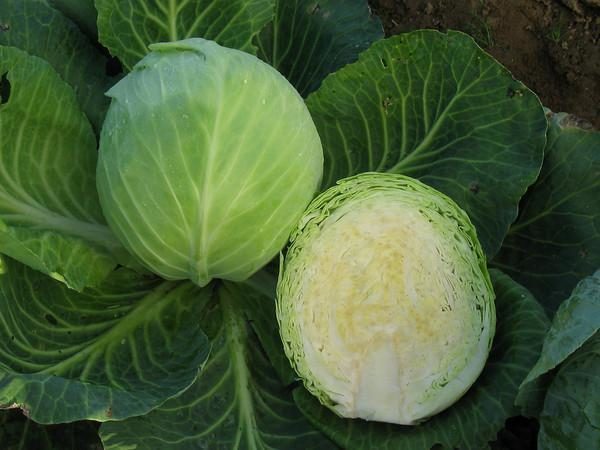
The leaves are light green with a strong waxy bloom of a gray tinge, round shape, large size, slightly bubbly with a slightly wavy edge. The leaf of a ripe head is very juicy, soft (there are no pronounced hard streaks),crisp and sweet (the content of organic sugar is much higher than in all known varieties of cabbage), with a high content of vitamins and trace elements.
The head of the Sugarloaf has a flat rounded shape, partially covered with a sheet, in the section it is a sparkling white color, the flesh is very dense (the density estimate is 4.1 points on a 5-point system). Inside the pole is short (up to 7 cm), outside - medium length.
It is best to eat and salting a vegetable one month after harvest - cabbage improves its taste, becomes completely sweet and does not taste bitter.
Main advantages and disadvantages
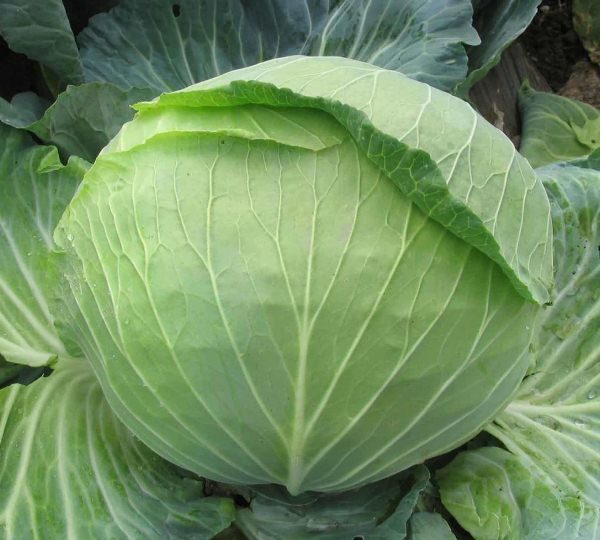
Cabbage Sugar Loaf has a lot of advantages and useful qualities:
- great taste qualities, fully justifying the name of the variety - sugar;
- high content of vitamins and trace elements - B1 (thiamine), B2 (riboflavin), B9 (folic acid), C, PP, iodine, phosphorus, fluorine, sodium, potassium, calcium, iron, manganese;
- excellent keeping quality - it is stored until May-June, without being subjected to rotting, retaining useful properties, improving (!) Taste indicators of quality;
- well preserves the presentation, as cabbage heads are resistant to cracking;
- grade resistant to such common diseasesas keel, fusarium, bacteriosis;
- has a good seed germination.
Among the shortcomings can be noted only not the highest yield - about 6 kg per square meter.
Soil preparation and seedling cultivation
Growing crops produced through seedlings. Sowing seeds of late ripening varieties is best done in the beginning - middle of April. Place the seedlings on the windowsill or sow directly into the open ground under the film. The soil for seed germination should warm up to 15-17 degrees, sowing density - 5x5 cm. Seeds before sowing should be soaked for 12 hours in a solution of potassium humate, then rinsed and lightly dried.
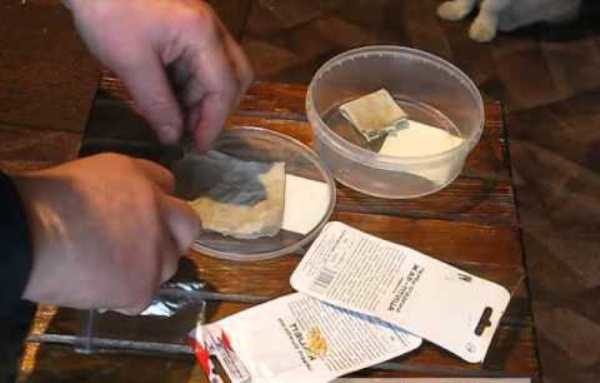
The soil should be well fertilized with humus, urea, potash fertilizers. For growing seedlings at home, you can prepare containers with special mixtures:
- 20-25% turfy ground, 70% peat, 5% sand;
- half of the composition - turf, up to 45% - humus, 5% sand.
In open soil, seedlings are planted after the appearance of 4 leaves, approximately in late May - early June.
Growing cabbage Sugarloaf in the open field
In order to plant cabbage seedlings in open ground, it is necessary to prepare it well and follow some simple rules:
- Cabbage should not be planted at last year’s landing site, predecessors should be potatoes, legumes, onions, pumpkins;
- suitable soil composition - weakly acid or neutral.
The sugar head likes well-lit, sunny places to grow. In the autumn, the bed for cabbage needs to be dug up, and in the spring - to loosen and apply organic fertilizers (per 1 sq. M - 10 l + 2 glasses of wood ash). In each well, you can fall asleep by 2 table. spoons of superphosphate and 1 urea spoon. Seedlings should be removed from each other not less than 60x60 cm, buried in the ground before the first leaves and pour 0.5 liters of water into each well.
Peculiarities of care
In the process of plant growth, it is recommended to feed organic fertilizers 2-3 times (manure + water in a ratio of 1: 5). After the appearance of 10-12 leaves, cabbage must spud, this will strengthen the root, will contribute to the emergence of new lateral roots.
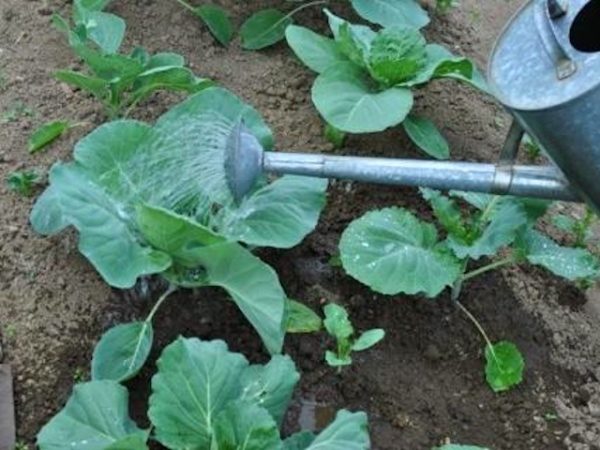
Watering the sugar head is better not very often. - 1 time in 20 days, but plentiful. The soil should not dry out, but you should not over-moisten. The most abundant watering - during the formation of the head. After watering or rain, the soil should be loosened, weeds removed. 3-4 weeks before harvesting, watering is stopped to avoid cracking the heads of the cabbage.
Cultural diseases, methods of control and prevention
The cabbage variety Sugarloaf is resistant to many common diseases, but in the case of improper growing methods and adverse weather conditions, there is the possibility of infection.
Quila
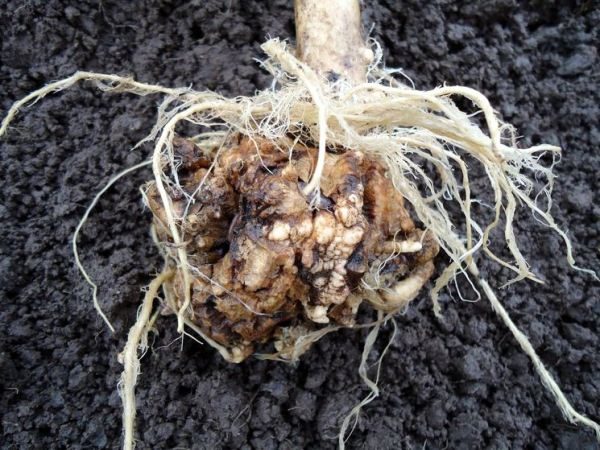
Fungal disease, for the prevention of which it is necessary to observe crop rotation remove weeds, in the soil before planting to make lime, destroy infected specimens.
Fusarium
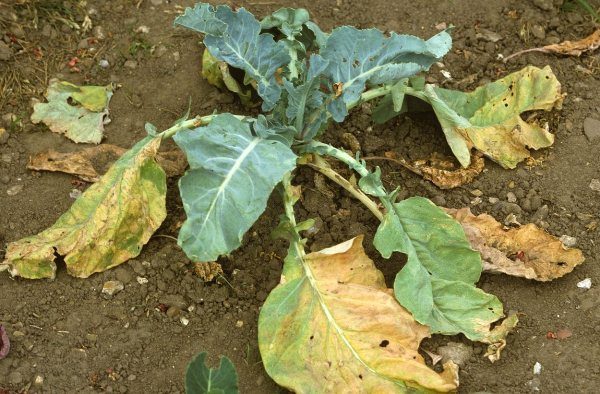
Yellowing of the leaves between the veins, on the cut usually staining is visible brown in color. Affected plants need to be removed, as a preventive measure, process the soil with copper sulfate, spray it with Agat-25, Immunocytophyte.
Bacteriosis
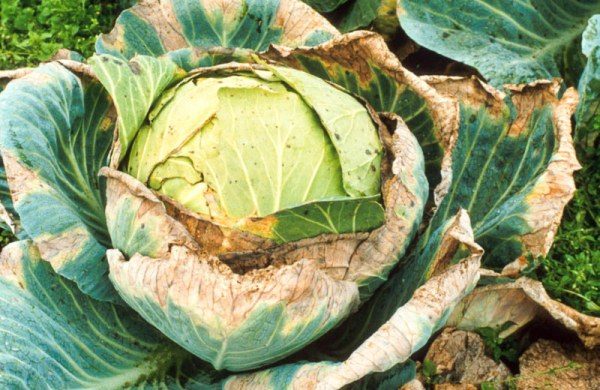
The veins of the leaves turn black, the edges turn yellow, the affected leaves die off. Well helps spraying seedlings drug Fitolavin 300, culling infected and weak copies.
Harvesting
As already mentioned, Sugar Loaf should be collected after 1-2 frosts, in late September - October (depending on the climatic conditions of the growing area). For storage, select healthy cabbage, without cracks and damage. Trim the outer stump, leaving about 4 cm. Store in a dry place, on shelves, shelves or in wooden boxes at 0 degrees. In such conditions, your cabbage will remain until the end of May.
Compliance with the simple rules of agricultural technology will allow you to get a rich healthy harvest of the wonderful vegetables. All winter you can enjoy dishes and salads from a delicious, sweet, very healthy and dietary garden crop.
